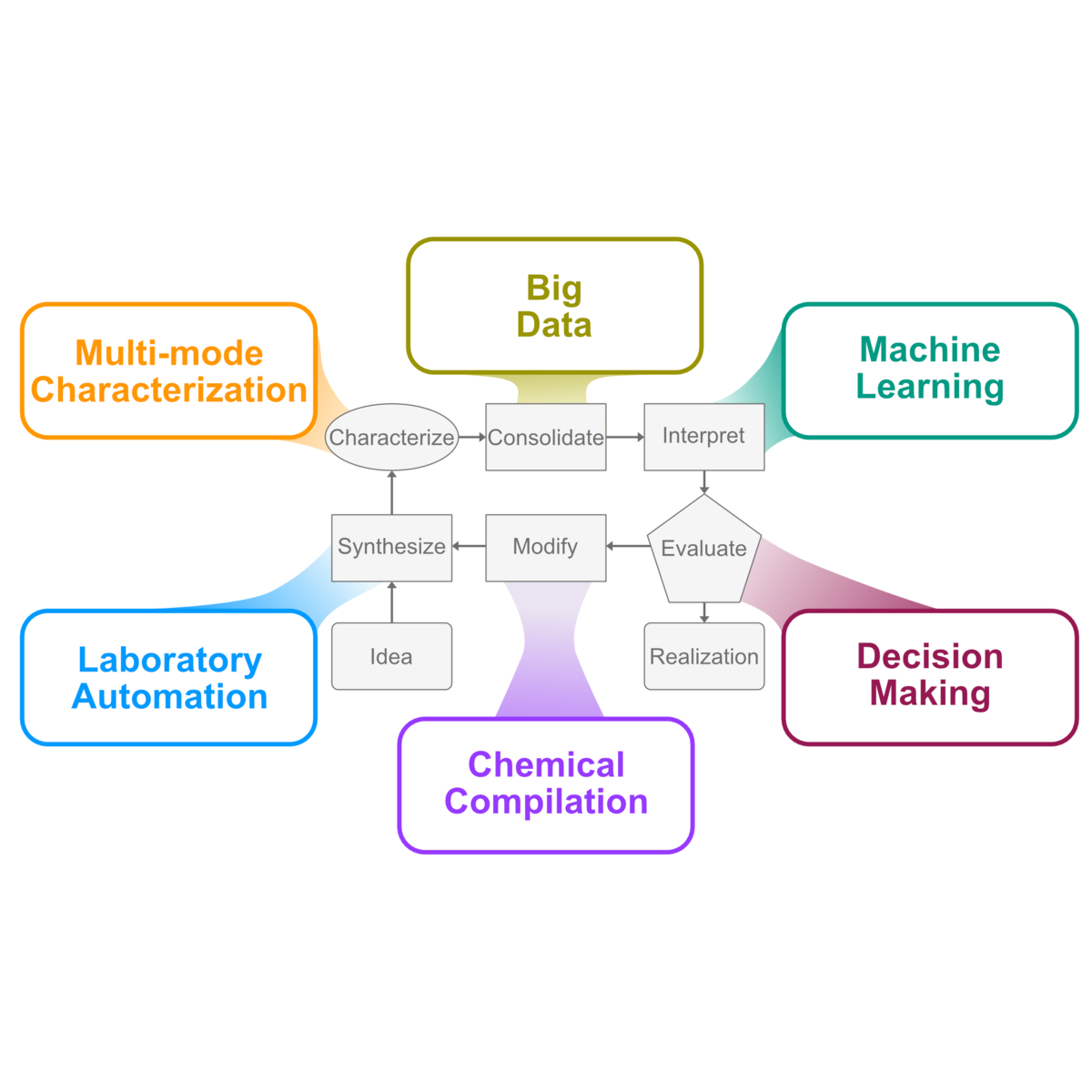Research
Revealing chemical detail with atomic resolution, NMR is an excellent method for material and biological system characterization and subsequent digitalization. By correlating with orthogonal characterization analytics, materials and their expected properties discovered through modeling and simulation approaches can be verified (MDMC and VMD). Extension to correlated, in situ, and operando measurements will be explored to further enhance the information gained per sample per unit time.
This is a highly collaborative effort together with Dr. Rossella Aversa (data management), Dr. Vlad Badilita (micro-NMR hardware), Prof. Jürgen Brandner (microfluidics), Dr. Mazin Jouda (ML approaches to MR, parallelization), Dr. Nicole Jung (ELN), and Dr. Dario Mager (lab automation).
1. Automated chemical synthesis
Chemical synthesis under automation is expected to enable an expansion of the experimentally accessible chemical space that would be otherwise difficult to explore. A collection of routine unit operations have already reached a degree of automation, forming a base from which more sophisticated procedures can be built. A key requirement is the characterization of these materials, where NMR spectroscopy can play a central role
2. Parallel NMR spectroscopy
Standard NMR is performed serially, reflecting a significant bottle-neck in enhancing sample throughput. Enhanced sample throughput can be achieved by parallelizing i) the number of samples measured, and ii) the number of NMR experiments performed per sample. Both strategies require novel approaches to NMR experiment planning, execution, data handling, and subsequent analysis.
3. ML/AI-assisted spectral analysis
Machine learning and AI-assisted approaches to big data analytics are anticipated to play a critical role in facilitating rapid evaluation and decision making processes on the dense spectral data. These analyses must be able to link spectral information to chemical structure, enabling comparison with computational approaches to material discovery. In a closed loop system, the automated chemical synthesis can be instructed by this material digitalization on new synthesis parameters in the following round, driving an optimization procedure towards a target physical or chemical property


